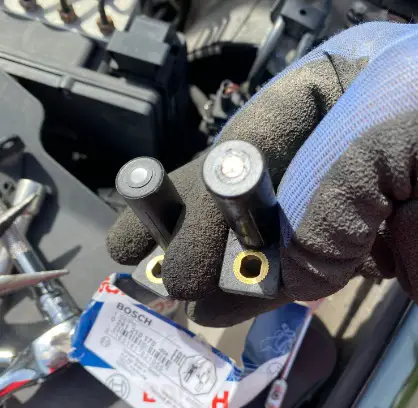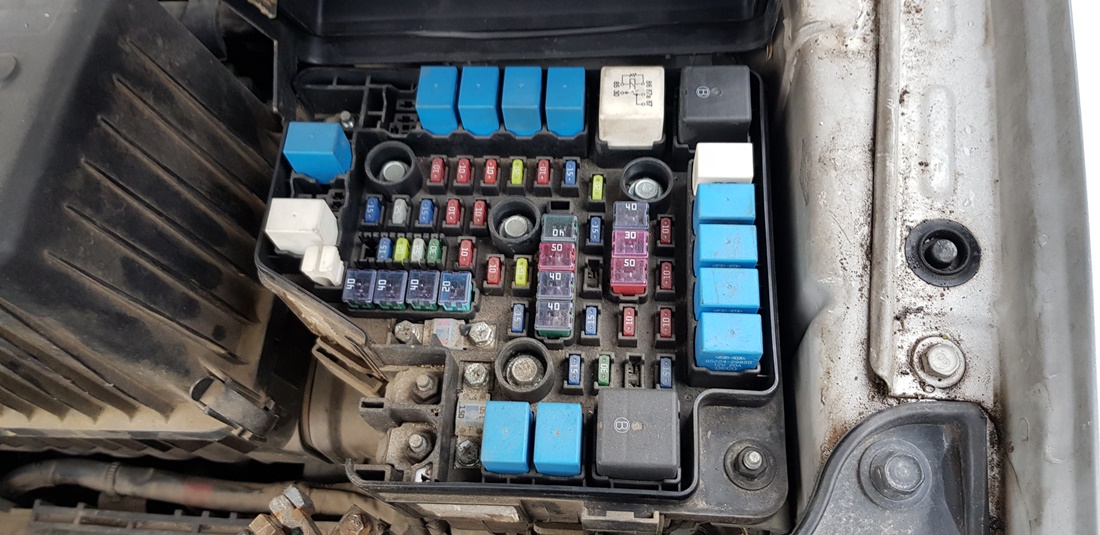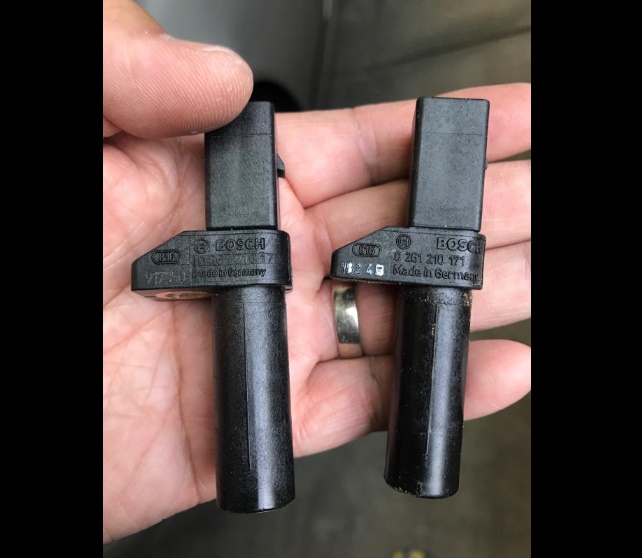Shocks and struts do far more than just give you a comfortable ride. Shocks and struts provide your vehicle with stability, handling, better stopping distance, and safety.
However, shocks and struts are some of the most overlooked maintenance items.
- Key Takeaway
- What Are Shocks and Struts
- 10 Signs of Bad Shocks and Struts
- 1. Over 50,000 miles
- 2. Nose-diving when braking
- 3. Excessive bounce on rough surfaces
- 4. Vehicle veers in crosswinds
- 5. Excessive lean or sway in turns
- 6. Steering wheel vibrates
- 7. Uneven or premature tire wear
- 8. Noticeable fluid leakage
- 9. Dented or damaged housing
- 10. When your installer raises concerns
- What Causes Shocks and Struts To Go Bad
- What Happens If You Drive With Bad Shocks And Struts?
- How Often Should Shocks and Struts Be Replaced?
- FAQs
- Q: What are shocks and struts?
- Q: How do I know if my shocks and struts are worn?
- Q: Can worn shocks and struts affect my vehicle’s steering and braking?
- Q: How do worn shocks and struts affect the overall suspension system?
- Q: What are some symptoms of bad shocks and struts?
- Q: Can hitting a pothole or a bump cause shocks and struts to go bad?
- Q: How often do shocks and struts need to be replaced?
- Q: What are the benefits of replacing worn shocks and struts?
- Q: Can I replace shocks or struts on my own, or should I seek professional help?
- Q: Do I need to replace shocks and struts in pairs?
- In Conclusion
Key Takeaway
- Signs of bad shocks and struts include excessive bouncing, poor handling, uneven tire wear, and a rough or noisy ride.
- Shocks and struts are components of a vehicle’s suspension system that help absorb bumps and vibrations, providing a smoother and more controlled ride.
- Shocks and struts can go bad due to factors such as normal wear and tear, harsh driving conditions, fluid leaks, or damage from road debris.
What Are Shocks and Struts
Shocks and struts are important components of a vehicle’s suspension system. They are designed to provide stability, control, and comfort while driving.
Shocks, also known as shock absorbers, are typically found in the rear suspension, while struts are found in the front suspension.
Both shocks and struts work by dampening the movements of the springs in the suspension, absorbing and dissipating the energy generated from bumps, potholes, and other road irregularities.
This helps to maintain tire contact with the road surface and ensures a smoother and more controlled ride.
Additionally, shocks and struts help prevent excessive body roll and pitching during cornering and braking, improving overall handling and safety.
10 Signs of Bad Shocks and Struts

- Over 50,000 miles
- Nose-diving when braking
- Excessive bounce on rough surfaces
- Vehicle veers in crosswinds
- Vehicle veers in crosswinds
- Excessive lean or sway in turns
- Steering wheel vibrates
- Uneven or premature tire wear
- Noticeable fluid leakage
- Dented or damaged housing
- When your installer raises concerns
Wear and damage on shocks and struts usually happen gradually and people tend to adjust their driving without realizing they’re compensating for the loss of control.
When shocks and struts fail, the signs are not as visible as a failed blinking light or a flat tire. So how can you know when your shocks and struts have failed? Here are 10 signs of bad shocks and struts:
1. Over 50,000 miles

One of the easiest ways to determine whether you need to replace your shocks or struts is to take a quick glance down at your odometer.
For maximum driver safety, performance, and comfort expert mechanics recommend replacing your shocks and struts at 50,000-mile intervals.
Routine maintenance and replacement with high-quality shocks or struts may also save you money in the long run as unidentified shock and strut problems can easily lead to more costly suspension issues.
2. Nose-diving when braking
Have you ever been in a situation that required you to quickly slam on the brakes because there was maybe a driver in front of you, you stopped short, or something darted in front of your vehicle?
Stopping hard and fast with warn shocks or struts forces your vehicle to nose-dive because the sudden transfer of weight forward naturally causes the rear of the vehicle to rise and reduces the rear braking performance.
Poor traction is a recipe for an accident. Many drivers take for granted the importance shocks and struts have on a vehicle’s ability to stop safely and effectively.
Did you know that driving with worn shocks and struts at a speed of 70 miles per hour can increase your stopping distance by more than 22 feet? Those extra feet could be the difference between a close call and a collision.
Don’t take chances with your safety. If you notice your vehicle is nose-diving, get your shocks or struts checked by a certified technician and ask for high-quality products if they need replacement.
3. Excessive bounce on rough surfaces

When you drive over a bump or rough surface, it’s actually the springs in your car that absorb the impact, not the shock absorber. One of the main functions of shocks and struts is to keep the bouncing sprint under control and thus keep your tires glued to the road when you hit a bump.
Your vehicle should rise and fall quickly then stabilize after one or two rebounds. If you notice that your vehicle is continuing to rock up and down after hitting a bump, or if the suspension routinely bottoms out when going over potholes, it’s a sign that you need to have your shocks or struts checked and replaced.
4. Vehicle veers in crosswinds
When you drive past a large truck does your vehicle rock back and forth? Do strong gusty crosswinds turn driving into a white-knuckle experience? If so, there’s a good chance your shocks or struts aren’t functioning properly.
When shocks and struts lose their damping ability, your vehicle is less stable in windy conditions. This is even more noticeable and dangerous for light trucks, SUVs, or vehicles towing heavy loads. This is an important sign that you have to replace your shocks and struts.
5. Excessive lean or sway in turns

Rock and roll music is great on your radio but not when it comes to your suspension. Much like veering and crosswinds, excessive rocking body roll lean or sway is often caused by shocks or struts that have lost their damping ability over time.
This impacts their capacity to smoothly and quickly respond to weight transfer in corners. The result is a loss in driver control and it’s a serious safety issue, one that I recommend you have checked sooner rather than later says Monroe.
6. Steering wheel vibrates

You know that feeling you’re driving along on perfectly smooth pavement and hit 60 miles per hour and suddenly your steering wheel starts to shake and vibrate.
You probably suspect that the cause for this must be unbalanced front tires, faulty steering, or a bad alignment. That’s most likely the case. But, if those parts are worn or faulty, they may have affected the condition of your shocks and struts and caused premature wear or damage which means they may be in need of replacement.
If you experience any steering wheel vibration be sure to have a qualified technician inspect your suspension to identify whether your shocks or struts, as well as other components, need to be replaced.
7. Uneven or premature tire wear

Another indicator that your shocks and struts might be worn or damaged is to check your tires for any uneven or premature tread wear.
Premature wear of the tires can be a clear sign of a worn shock or strut especially if it only occurs on one side. You can also check for cupping or scuffing of the tires. Both of these are caused by the shock or struts’ inability to control the suspension which causes the tire to bounce and wear unevenly while you drive.
There are many other factors that can cause premature or uneven tire wear, so if you notice them it is recommended that you have your vehicle inspected by a professional installer to see whether worn shocks or struts are the cause.
8. Noticeable fluid leakage

If you drive on harsh country roads, periodically check for fluid leaking from your shocks or struts. Ice, snow, grit, and debris can easily scratch or damage the piston rod, allowing grit and dirt to harm the piston seal.
When the seal is compromised, fluid can leak and impair the shock or struts’ ability to control the vehicle. If your shock or strut is leaking, you’ll likely see a thick solid coat of grime, grit, and dirt built up on the leaked oil.
An undamaged shock or strut might have some road dirt, but it won’t be as extensive. Remember to occasionally inspect your shocks or struts. Look for any discoloration or excessive grime and dirt on the body of the shock or strut. It’s a serious safety risk and a sure sign that your shocks or struts may need to be replaced.
9. Dented or damaged housing
Other visible signs that your shocks or struts might need to be replaced are dents or cracks in the shock or strut housing. You or your professional installer can also look for broken and worn mounts or worn bushings.
If your shocks or struts are dented or damaged, there’s a good chance it’s also affecting other suspension parts or causing them to work harder which may lead to premature wear. These might include the spring seats which might have rusted out the upper area of the strut tube which might have corrosion that rusted through or accessory brackets attached to the strut.
Be sure to check the condition of the boot and bumper. If you see cracks or dents on the shocks or struts, have them replaced immediately with high-quality parts.
10. When your installer raises concerns
You can’t put a price on your safety or the safety of others. It’s one of the key things your installer considers when making a recommendation about the repairs to your vehicle.
If your professional installer does raise concerns about the condition of your shocks or struts and you’ve noticed any of the other warning signs, it’s vital that you have your shocks or struts repaired, replaced, or upgraded with high-quality products.
Driving with worn shocks or struts may not be as noticeable as a blown tire or squeaky brakes. But it’s just as dangerous. You’ve got a lot riding on the condition of your shocks and struts. Don’t take the risk and remember to keep an eye out for the ten warning signs. Get your shocks and struts checked every 12 months or 12,000 miles.
What Causes Shocks and Struts To Go Bad
- Normal wear and tear over time
- Harsh driving conditions, such as frequent off-road driving or driving on rough terrain
- Fluid leaks from the shocks or struts
- Damage from road debris, such as potholes or speed bumps
- Overloading the vehicle beyond its weight capacity
- Improper installation or incorrect alignment
- Lack of regular maintenance and inspection.
What Happens If You Drive With Bad Shocks And Struts?
Driving with bad shocks and struts can have several negative impacts on your vehicle and overall driving experience.
- It can adversely affect your vehicle’s handling and stability, making it more difficult to control and maneuver. This can increase the risk of accidents, especially in emergency situations or during abrupt maneuvers.
- Bad shocks and struts can lead to increased stopping distances, as they are responsible for maintaining tire contact with the road surface. This can compromise your ability to brake effectively, potentially resulting in longer braking distances and a higher chance of collisions.
- Driving with worn shocks and struts can lead to excessive tire wear, causing uneven tread wear patterns and reducing tire lifespan.
- It can result in a bumpy and uncomfortable ride, as the shocks and struts are responsible for absorbing bumps and vibrations from the road. This can make your journeys less enjoyable and cause discomfort for both you and your passengers.
Therefore, it is crucial to address any issues with your shocks and struts promptly to ensure safe and comfortable driving.
How Often Should Shocks and Struts Be Replaced?
The general recommendation for replacing shocks and struts is every 50,000 to 100,000 miles. However, this can vary depending on factors such as driving conditions and vehicle usage.
Aggressive driving and frequently driving on rough roads may require more frequent replacement.
It is also advisable to have them inspected regularly, starting at around 50,000 miles, to ensure they are functioning properly.
Checking for signs of wear, such as leaking fluid or reduced performance, can also help determine if it’s time for a replacement.
FAQs
Q: What are shocks and struts?
A: Shocks and struts are components of a vehicle’s suspension system. They work together to help absorb the impact from bumps and uneven road surfaces, providing a smoother and more stable ride.
Q: How do I know if my shocks and struts are worn?
A: There are several signs that your shocks and struts may need to be replaced. These signs include excessive bouncing, poor steering response, longer stopping distances, uneven tire wear, fluid leaking from the shocks or struts, and a harsh or bumpy ride.
Q: Can worn shocks and struts affect my vehicle’s steering and braking?
A: Yes, worn shocks and struts can have a negative impact on your vehicle’s steering and braking. They can cause increased body roll, reduced traction, and longer stopping distances, making it harder to steer and brake effectively.
Q: How do worn shocks and struts affect the overall suspension system?
A: Worn shocks and struts can lead to a compromised suspension system. They can cause excessive swaying or leaning during turns, reduced stability, and uneven tire wear. Over time, this can put additional strain on other suspension components and lead to further damage.
Q: What are some symptoms of bad shocks and struts?
A: Some symptoms of bad shocks and struts include a bouncy or floating sensation while driving, excessive noise over bumps or dips, a noticeable decrease in ride comfort, and a front-end dive or rear-end squat during braking or acceleration.
Q: Can hitting a pothole or a bump cause shocks and struts to go bad?
A: Yes, hitting a pothole or a bump can accelerate the wear and tear on shocks and struts. The impact can cause them to become damaged or weakened, leading to decreased performance and potential failure.
Q: How often do shocks and struts need to be replaced?
A: The lifespan of shocks and struts can vary depending on driving conditions, vehicle usage, and manufacturer recommendations. Generally, it is recommended to have them inspected every 50,000 miles and replaced if necessary.
Q: What are the benefits of replacing worn shocks and struts?
A: Replacing worn shocks and struts can improve ride comfort, stability, and overall vehicle performance. It can also help maintain proper tire contact with the road, reduce body roll, and enhance the effectiveness of your vehicle’s braking and steering systems.
Q: Can I replace shocks or struts on my own, or should I seek professional help?
A: While it is possible to replace shocks or struts yourself, it is generally recommended to seek professional help. This is because the process involves specialized tools and knowledge of the suspension system. A professional can ensure the job is done properly and safely.
Q: Do I need to replace shocks and struts in pairs?
A: It is generally recommended to replace shocks and struts in pairs to ensure balanced performance. If one side is worn or damaged, the other side may also be compromised. Replacing them in pairs helps maintain stability and consistency in the suspension system.
In Conclusion
In conclusion, the signs of bad shocks and struts can be quite varied. While some will present a clear indication that there is an issue, others can be more subtle.
It is important to make sure you are aware of these signs so that you know when it is time for an inspection or replacement.




